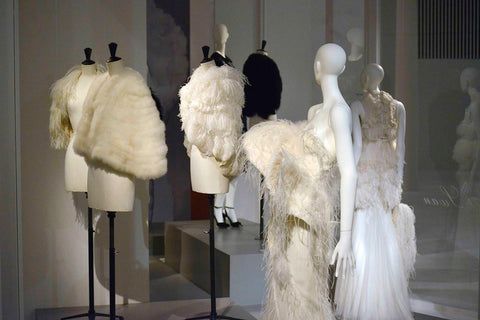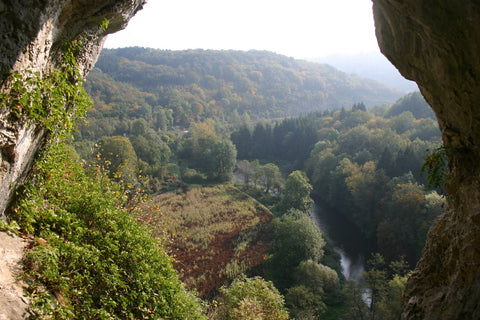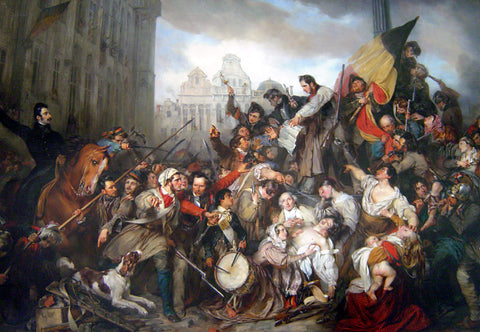- No products in the cart.
Cycling
In Belgium and in the Flemish region in particular, the love of cycling borders on fanaticism. Whether it’s competitive or just for fun, takes place on the road, in a field or around the velodrome or “piste”, cycling catches the attention of any self-respecting Belgian.
Any excuse to pit man powered two wheel vehicle against man powered two wheeled vehicle is grabbed whatever the time of year. Every village seems to have a cycling club and most of these will meet once or twice a week for a 2½-hour ride that will usually cover 50 km or more.
Belgium is something of a paradise for the leisure cyclist and sometimes it seems that half the nation owns a (semi-) professional bike or even stables a selection of them in their garage, ready for any challenge on any terrain. If you thought the Dutch were born on a bike you have never visited Belgium!
The National Cycling Museum in Roeselare West Flanders is the country's finest and is completely dedicated to the bicycle.
History

Although the concept of the wheel has been around for thousands of years, it wasn’t until the early 1800’s that the first machine resembling the modern bicycle saw the day of light. In the beginning it was nothing more than a, usually wooden, oddity with no pedals and propelled like a toddler on a sit on toy.
These contraptions were far from comfortable and very unstable. And that’s an understatement; these early machines richly deserved their “Boneshaker” nickname.
Luckily there weren’t too many of them around, so grown men making an unseemly spectacle of themselves on the highway were a relatively rare sight.
Like most new technologies they were rather expensive and therefore remained a plaything for the rich. Nevertheless, boys will be boys, so it wasn’t very long before these primitive machines were improved enough to allow the first race to be staged - in Paris on the 31st of May 1869. At just 1,312 yards or 1,200 metres it was a long way from the Tour de France.
The first intercity race was run from Paris to Rouen in 1869 when it took the contestants more than 10 hours to finish at an average speed of about 7.8 miles an hour (12.5 km/h).
Things have certainly changed a lot since then. Since then, the bike has become a practical, healthy and cost efficient means of transport for millions, in Belgium more than anywhere.
Cycling Today

Cycling as a sport is growing steadily from its European heartlands to become a global obsession. Today, big races and tours are held from Australia to Qatar. This ever-growing international interest has been fuelled by the big names like Lance Armstrong, Cadel Evans, Marc Cavendish and Bradley Wiggins (who was born in Belgium!).
Although Armstrong has confessed and is a fallen hero nowadays, no one, friend or foe, can deny he put cycling in the spotlight. Despite the many doping scandals, cycling seems to have turned a corner, and the latest generation of riders seem determined to ride clean.
A huge amount of effort has gone into making the sport – for spectators, amateurs and athletes – an honest pastime, hobby or profession.
Sports like track athletics have been through similar crises and have survived and grown stronger and there’s no reason why professional cycling shouldn’t fare the same.
Disciplines In Cycling
The Big Five in cycling are:
- Road Racing
- Track Cycling
- Cyclo-Cross
- Mountain Bike Racing
- BMX Racing
A Nation On Wheels

From the beginning, Belgium took a keen interest in this new and fast developing sport. The Royal Belgian Cycling Association, as it was initially named, was founded in 1889 and it wasn’t long before cycling was the national sport. As football (soccer) was seen as an elitist sport in Belgium, cycling was a great alternative for the average Joe.
The Flemish fell head over heels in love with the sport and have stayed true to it ever since. With such a massive following, the first stars of cycling were soon born, and as they were mainly Flemish they were honoured with the title, “Flandrien”.
A Flandrien was always on the attack, whatever the weather and despite the state of harsh cobble stoned roads of Flanders. Today it doesn’t matter what part of the country you come from the title is a coveted honour and there’s an annual award to the “Flandrien of the Year”.
The country has also always been a world player in cycling and in the early years it ruled even in the Tour the France, which was first held in 1903. And, although Belgium hasn’t produced a yellow jersey winner for decades the country still plays a major role in the world’s biggest cycling circus.
Many international teams employ Belgian ex-riders as trainers, psychologists or team managers. Talented riders from all over the world come to Belgium to train and learn their trade.
And yellow jerseys aside, if you have some of the best riders in the world, your team could be capable of winning one of the classics or semi classics and those other coveted prizes, the rainbow and green jerseys, available on the Tour the France.
The greatest rider to have ever lived is Belgium’s Eddy ‘Baron’ Merckx or “the Cannibal” who is revered as a God in his homeland. There’s a reason the Tour de France often locates the start or finish of one of its stages in Belgium.
Major Belgian Cycling Events

There are hundreds of organised road and off-road races each year in Belgium, and the top races attract thousands. However, the most important is undoubtedly the annual Tour of Flanders, or De Ronde that takes place on Easter Sunday, for more details. This race is nothing less than a cycling festival for the whole country and is considered a national holiday. In 2013 the hundredth anniversary of the Tour is being celebrated, which will be a great national occasion.
The route changes every year, but it always involves fast stretches on open roads, difficult sections over cobblestone roads and some very taxing climbs.
A feature of this race, and most other Belgian cycle races, is that on the day before the race anyone can sign up to ride the course. Thousands take the opportunity to take on at least part of the course. On race days the best vantage points are quickly snapped up.
The Tour is so important to Flanders that it got it's own museum at the Ronde Van Vlaanderen Centre in Oudenaarde. Big races are given extensive television coverage and the courses are dotted with big screens for those who can’t see the action directly.
Other important road races or "classics" include:
Across Flanders / Ghent-Wevelgem / The Brabant Arrow / The Walloon Arrow in mid-April / Liège - Bastogne - Liège in mid to late April
These are all one-day events and there are many more like them. The Eneco Tour, a week long race in mid-August, is another big date in the calendar. This seven stage Tour with two time trials, criss crosses the border between Belgium and the Netherlands on its 1,000 km route.
Another major event for Belgium, although it doesn’t actually take place in the country, is the “Hell of the North”, the one-day Paris to Roubaix race. The Gentse Zesdaagse or Six Days of Ghent is the most important track cycling event in the country.
Belgium By Bike

Belgium can offer something of interest to cyclists of every age and ability. For touring riders there is a great network of tourist information centres which give the best advice on local cycling facilities and events. Away from professional cycling and because of the nation’s two-wheel love affair there’s a comprehensive network of cycle routes around Belgium.
Many of these cycle paths travel, traffic free, across some of the country’s most beautiful and historic areas. Belgium is a great country for the holiday cyclist, particularly families who want to cycle safely without even seeing a car. Much of Belgium’s income comes from the tourist trade so these cycle routes are well-maintained to attract visitors looking for a healthy way of getting round some of the country’s attractions while enjoying the rich national wildlife.
Particularly in the Flemish area, facilities for cyclists are world class. This makes Flanders, Limburg, Antwerp and Brabant cycling heaven, with good cycle paths connecting most villages and passing through most towns.
These will usually give cyclists a tarmac-covered traffic free path of their own. Old bridle tracks are also turned to cyclists’ advantage and many have been resurfaced.
In French-speaking Wallonia in the south of the country, provision is a bit patchier and in some areas, particularly in towns and cities, non existent. As Wallonia is also the hilliest part of the country this does make some sense and the area boasts the country’s best and most numerous mountain biking trails.
For those who like a rather more gentle cycle ride, perhaps with the family, there are hundreds of, usually circular, way-marked cycle routes of varying distances that make perfect day trips. In the Flemish-speaking regions a system known as “Fietsroutenetwerk” has been introduced.
This translates literally as ‘bike route network’ and involves a grid system of simple, numbered signs that mean you can leave your, 'unpractical', map at home. Check out the Fietsroute site for more information.
Each intersection is furnished with a sign giving directions to the next, along with a map of the grid. All you need to do to get around is decide your route, note down the numbers and follow the signs. It is effectively cycling by numbers. There are also a number of long distance cycle routes crossing Belgium.
In the Flemish region there is the Lange-afstand Fietsroutes network, while in Wallonia the network is known as Rando-Vélo. Both have paths of average to long distance.
Cycling The Waterways

Belgium also has a strong tradition of water transport, by both river and canal, which once kept the nation’s industries connected. Throughout its sometimes turbulent history Belgium has often seen its vital link to the outside world through the Channel ports cut. As a trading nation, an alternative route to world markets was needed in times of trouble and that’s where the canals came in.
Hopefully, those days of war are long gone, but Belgium’s canal network, which links into a larger continental network, is still something of a national treasure.
Almost all of these canals have towpaths and these waterside routes are said to offer some of the best cycling in the world. Of the country’s 2,000 km network of canals, approximately 1,600 km of towpath are open to cyclists.
Obviously these towpaths are largely traffic-free and most pass through open country. Many of these routes are further connected by trails running along former railways.
Both the Flemish and Walloon regional governments have actively improved towpaths and abandoned railway tracks for use by cyclists. In some cases where a towpath has been turned into a modern road, separate paths are built for cyclists.
Cycling Holidays
As a result of all this, cycling holidays are very popular in Belgium. The cycle routes are good and it’s possible in many cases to keep well away from all motor traffic. There are plenty of wayside inns and other refreshment places serving excellent Belgian beer, local food and regional specialities.
There is no need for extensive planning, with such good cycle networks it’s easy to travel as you fancy, diverting off a sketchily prepared route when something grabs your attention and demands a visit.
There are plenty of campsites for overnight stops and if you don’t want to lug a tent around there are lots of B&Bs. If you want something a little more organised, cycle package tours complete with a carefully planned route and all accommodation set up in advance are easily arranged.
Your luggage is transported to each overnight stop so that all you need to carry is a bottle and a camera as you enjoy your day’s cycling.





